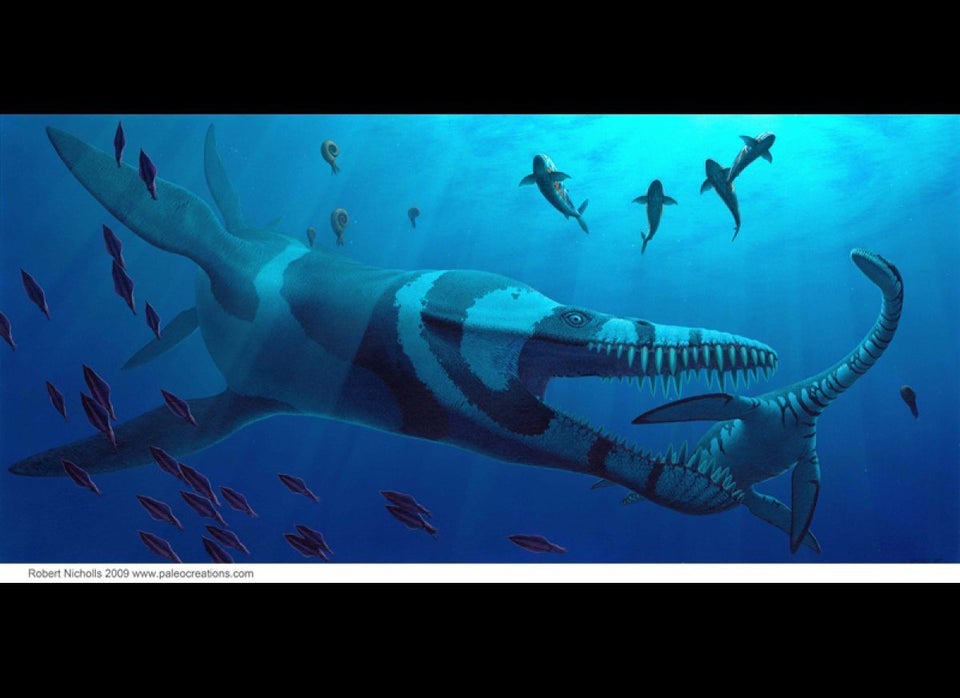Call it the latest salvo in the not-so-heated debate over whether dinosaurs were hot- or cold-blooded.
A new paper published in the journal PLoS One argues that dinos must have been warm-blooded like birds and mammals--and not cold-blooded like reptiles, as many scientists believed in years past.
Why is that? Because if dinosaurs had been cold-blooded, study author Dr. Roger S. Seymour argues in the paper, the ancient beasts wouldn't have had enough muscle power to capture their prey and be the dominant animals of their time.
To reach that conclusion, Seymour, professor of earth and environmental sciences at the University of Adelaide in Australia, looked at the muscle power of a powerful modern-day reptile--namely, a saltwater crocodile.
"Some point out that a large saltwater crocodile can achieve a body temperature above 30 degrees C (86 degrees Fahrenheit) by basking in the sun, and it can maintain the high temperature overnight simply by being large and slow to change temperature," Seymour said in a written statement. "They say that large, cold-blooded dinosaurs could have done the same and enjoyed a warm body temperature without the need to generate the heat in their own cells through burning food energy like warm-blooded animals."
Not true, Seymour argues.
Seymour's calculations show that a 200-kilogram (441-pound) croc is able to produce only about 14 percent as much power as a mammal at peak exercise, according to the statement. And that suggests that crocs lack not only the power but also the endurance of warm-blooded mammals.
"Dinosaurs dominated over mammals in terrestrial ecosystems throughout the Mesozoic," Seymour said in the statement. "To do that they must have had more muscular power and greater endurance than a crocodile-like physiology would have allowed."
It's not the only recent study to suggest that dinosaurs weren't the slow-moving, cold-blooded creatures many scientists once believed them to be. The authors of a paper published in the journal Nature in 2012 found evidence of so-called "lines of arrested growth" (LAGs) in the bones of warm-blooded animals--features that that had been believed to develop only in cold-blooded animals. The scientists said in a written statement that their finding "conclusively closes the debate" over dinosaur metabolism.
So maybe we should consider the debate over dinosaur metabolism closed. Again.

